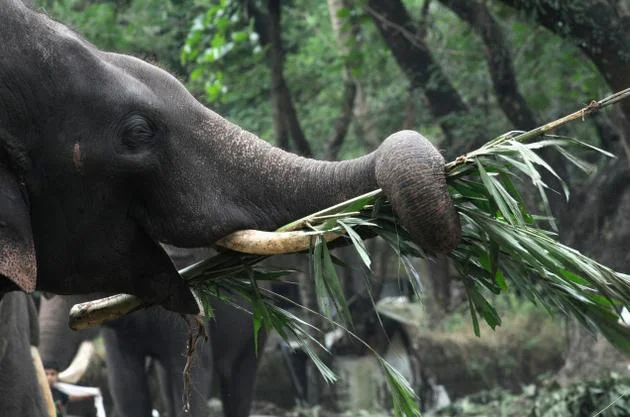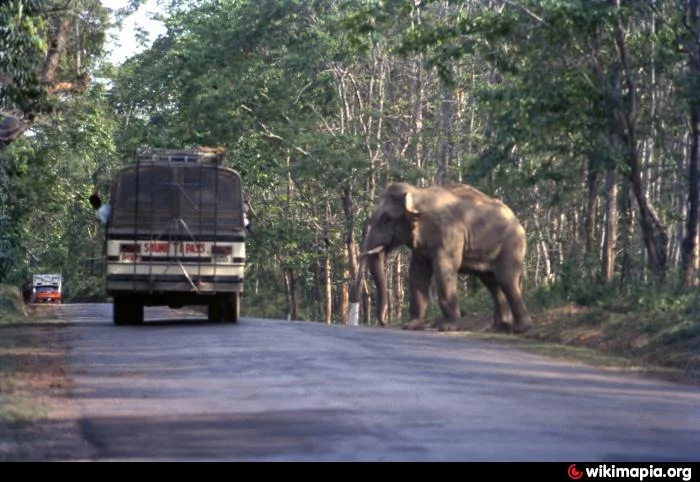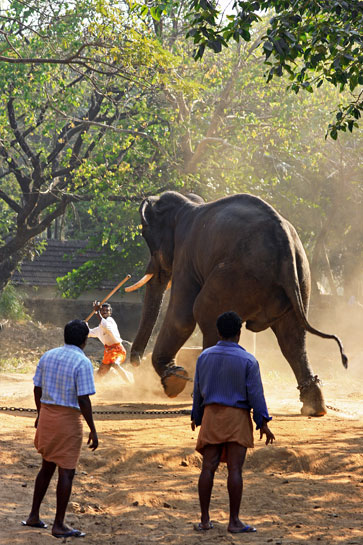Severe New Challenges To Future Of India's Elephants
/Officials in India argue that while the white tiger faces extinction, elephant populations aren’t declining. India has over 27,000 elephants, an increase from over 21,000 in 2005, that live in 26 elephant reserves spread over an area larger than the Congo.
Recognized by its smaller size and significantly smaller ears, Indian elephants aren’t poached for ivory in the same numbers as in Africa, because only the male Indian elephants has tusks. Nevertheless, the expanding Asian middle class is fueling the demand for killing Indian elephants, too, resulting in a severely skewed sex ratio that impacts breeding rates for the species.
In a 2010 Independent UK article, the drastic gender gap was estimated to be just one male elephant for 100 females.
Humans and Elephants Together
The greatest challenge in India (and also large parts of Africa) is how humans and elephants live together, Over the last 20 years, elephants in India have lost 20% of their habitat, causing an increase in human-elephant conflict. Mining projects in Central India are considered the biggest threat to elephants, which are sacred animals in India. Last year the Indian government declared the Elephant as the National Heritage Animal of the country, wrote the Hindustan Times
A November 2014 conference focused on illegal wildlife trade in India and the adjoining countries of Myanmar and Bhutan, cited an excellent example of the conflict between humans and elephants. In this case, the conflict wasn’t between farmers and elephants or urban sprawl and the creation of suburban towns and cities in developing countries.
Conflicts also occur with industries, tea gardens, and other business developments writes Indian Express.With business development, settlements are built to house the workers. Indeed, the elephants have trampled into these new towns, creating havoc and serious damage to property and even residents. In 2010, an estimated 400 humans were killed by Indian elephants gone wild.
Conflict Between Humans and Elephants Is Not Inevitable
Numaligarh Refinery in Assam for instance was set up on a site that was a known elephant habitat. While locating the refinery say 10 kms away could have not dislocated a large number of elephants, nothing can be done there now except securing other adjoining areas for the elephants,” said participants at the recent conference.
“Numaligarh Refinery in Assam for instance was set up on a site that was a known elephant habitat. While locating the refinery say 10 kms away could have not dislocated a large number of elephants, nothing can be done there now except securing other adjoining areas for the elephants,” Borthakur, briefing on the deliberations, said. - See more at: http://indianexpress.com/article/india/india-others/experts-seek-more-habitat-and-corridor-protection-for-asian-elephants/#sthash.8ks866sj.dpuf
“Numaligarh Refinery in Assam for instance was set up on a site that was a known elephant habitat. While locating the refinery say 10 kms away could have not dislocated a large number of elephants, nothing can be done there now except securing other adjoining areas for the elephants,” Borthakur, briefing on the deliberations, said. - See more at: http://indianexpress.com/article/india/india-others/experts-seek-more-habitat-and-corridor-protection-for-asian-elephants/#sthash.8ks866sj.dpuf
A recent article inSanctuary Asia lists Ten Ways To Save Elephants. We know that elephan ts are a very advanced animal species, which is why ‘Recognise their societies’, is a critical element on this saving the elephants strategy.
Elephants are big, intelligent and nomadic. They are also highly social beings. Any human-led management effort that attempts to alter such societies and kinships among elephants is bound to fail. Only long-term studies can lead to better understanding of such clan and kin behaviour and thus informed management. Intervention that removes individual animals against the will of elephant society or translocates groups into unfamiliar terrain splintering their kinship boundaries could result in failure. Keeping animals in solitary captivity is worse than death, and that brings us to the next point.
Anne of Carversville and our GlamTribale gift and jewelry business relaunching in 2015 are devoted to elephant conservation, with 5% of our revenues dedicated to preserving these majestic creatures.
Read more about elephants on AOC, including our adoption of ROROGIO at The David Sheldrick Wildlife Trust, the most successful orphan-elephant rescue and rehabilitation program in the world.



